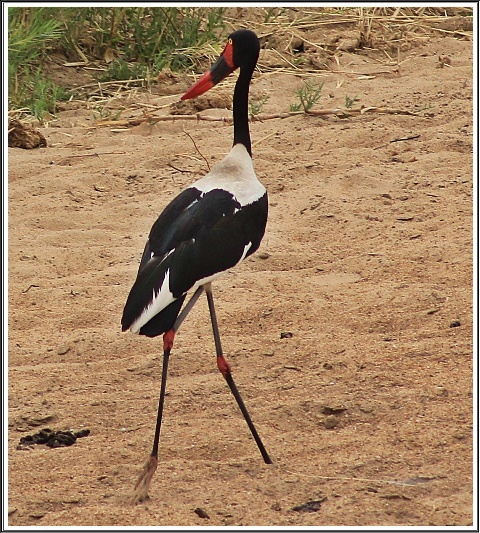Saddle-billed Stork Ephippiorhynchus senegalensis
Order Ciconiiforme – Family Ciconiidae
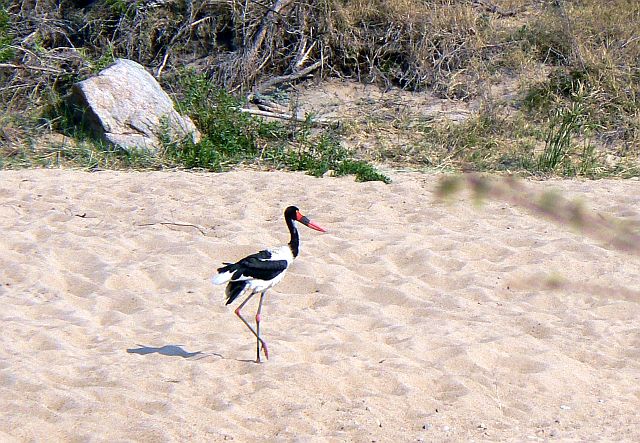 Size
Size
Length: 145-150cm. Wingspan : 240-270cm. Weight: Male: 5-7.5kg – Female: 5-7kg
Description
The head, neck and wings are black, with all other plumage white. At the center of the breast is a small, oval shaped patch of bare, red skin. Their most striking feature is the large slightly up curved bill, which is crimson with a dark band around the center and a striking yellow fleshy area at the base of the upper bill, the ‘saddle’. Males often have small yellow wattles at lower base. Legs and feet are blackish, with pinkish knees. Males are larger, around 6 kg, with dark eyes while the females are slightly smaller, around 5 kg, with yellow eyes. Juvenile is duller, mostly grey overall. Immature resembles adults, but duller. It reaches its sexual maturity at three years or more.

Juvenile
Distribution
Saddle-billed storks occur throughout tropical Africa, from Senegal to Sudan and Ethiopia, south to northern South Africa.
Habitat
It inhabits extensive wetlands in open, semi-arid areas and savanna, with relatively high abundances of fish and with large trees nearby for nesting and roosting. Suitable habitats include shallow freshwater marshes, wet grasslands, the margins of large or small rivers, lake shores, pans and flood-plains.
Social Structure
Saddle-billed storks are highly territorial and are usually found solitarily, in pairs, or in groups.The species nests in solitary pairs and usually remains solitary when not breeding, although it may occur in small family parties or in groups of up to 12 individuals.
Breeding
It is believed that they are generally monogamous, with some pair bonds lasting for years. Their breeding display consists of running short distances, jumping, and pirouetting with wings spread. This is called the Flap-Dash display and may be performed by either the male or female or both together.
Saddle-billed storks build large stick nests, usually at the top of a tall tree, near water. The male does the majority of the nest building, with the female seemingly supervising building activities, throwing out what she doesn’t like. The nest is a large flat platform of sticks placed up to 20-30m in a tree near water isolated from other trees and sources of disturbance. These birds often reuse the same nest, adding new materials to the structure.
Clutch size is 1-5, normally 2-3, pale blue to white eggs. Incubation lasts about 30 to 35 days. Both parents incubate the eggs and protect the nest area. Young are altricial, and parents feed the young by regurgitating food items onto the floor of the nest, which the nestlings pick up and swallow. Water is brought to the nest and regurgitated over the chicks for cooling. The chicks often drink this water as it flows out of the parents’ mouths. Generally two offspring, more rarely three, will fledge the nest at 60 to 100 days old. Offspring maintain their juvenile plumage and eye color until about 3 years of age when they achieve adult plumage and sexual maturity.
This species does not usually breed every year. The young birds of one or two years remain in the territory with parents, until the next breeding period.
Diet
Saddle-billed storks are opportunistic and carnivorous, feeding in wet areas. The diet consists predominantly of fish 15-30 cm long up to 500 g in weight, as well as crabs, shrimps, frogs, reptiles, small mammals, young birds, molluscs and insects (e.g. large water beetles, termite alates). There are some reports of saddle-billed storks eating carrion. Saddle-billed Stork feeds as large herons, by walking slowly in shallow water. It stalks preys such as fish, crustaceans and amphibians. It also searches by stabbing the bill into water, catching prey by contact, and in the same way into mud and vegetation. It swallows the fish head first and then, it drinks some water. Preys are jabbed with the bill.
Status and conservation
Saddle-billed storks are widespread, but uncommon and are not considered globally threatened. They may be susceptible to important changes in wetland areas and could easily become threatened. South Africa lists saddle-billed storks as an endangered species, as there are about 50 pairs. It is estimated that there are only between 25 and 30 breeding pairs of Saddle-billed Storks in the greater Kruger area.
The question as to why they are struggling is still not completely known. Firstly, this is a big bird that occurs in isolated, widely spread pairs, and it breeds slowly and irregularly – an unfavourable demographic profile.
Secondly, it needs large trees for nesting and fresh water as a source of decent-sized fish (its staple diet), so its resource requirements are quite demanding.
Thirdly, it may be sensitive to human disturbance, and will not nest if under any stress. Another issue is that the stork’s dependence on wetlands, and in particular large rivers, means that it is exposed to the effects wrought by dams, soil erosion and silting, and to the chemical pollution of these systems.
A pair of Saddle-billed Storks are breeding in a large riparian tree several hundred metres downstream of site of the proposed Malelane Hotel. 


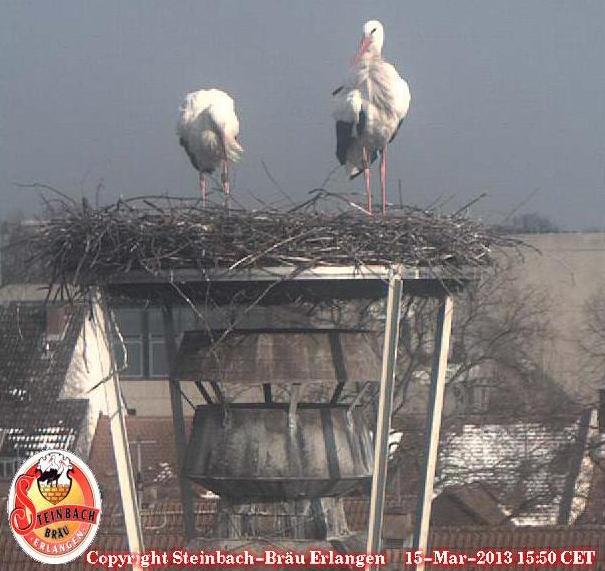



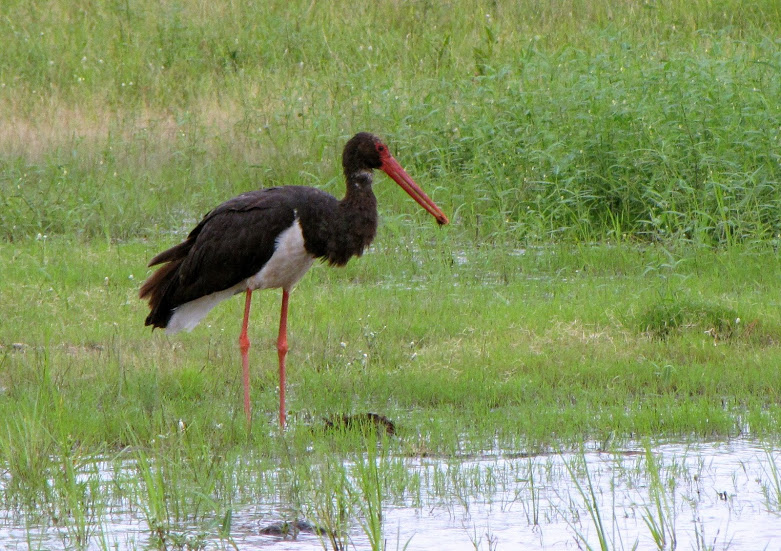
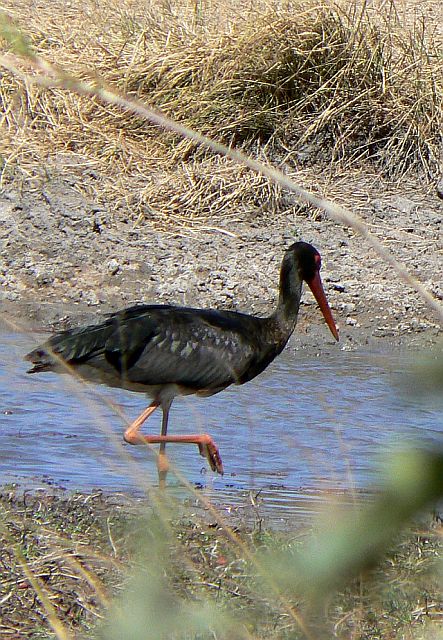 Kruger National Park
Kruger National Park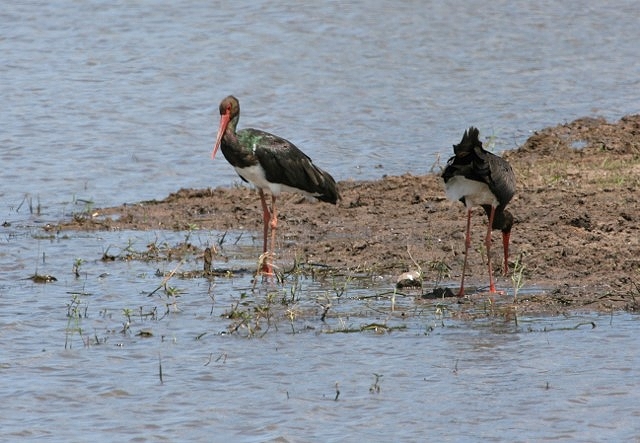

 Juvenile
Juvenile